SBOS777D November 2016 – July 2020 OPA2388 , OPA388 , OPA4388
PRODUCTION DATA
- 1 Features
- 2 Applications
- 3 Description
- 4 Revision History
- 5 Pin Configuration and Functions
- 6 Specifications
- 7 Detailed Description
- 8 Application and Implementation
- 9 Power Supply Recommendations
- 10Layout
- 11Device and Documentation Support
- 12Mechanical, Packaging, and Orderable Information
Package Options
Mechanical Data (Package|Pins)
Thermal pad, mechanical data (Package|Pins)
Orderable Information
6.8 Typical Characteristics
at TA = 25°C, VS = ±2.5 V, VCM = VS / 2, RLOAD = 10 kΩ connected to VS / 2, and CL = 100 pF (unless otherwise noted)
Table 6-1 Table of Graphs
| DESCRIPTION | FIGURE |
|---|---|
| Offset Voltage Production Distribution | Figure 6-1 |
| Offset Voltage Drift Distribution From –40°C to +125°C | Figure 6-2 |
| Offset Voltage vs Temperature | Figure 6-3 |
| Offset Voltage vs Common-Mode Voltage | Figure 6-4 |
| Offset Voltage vs Power Supply: OPA388 and OPA2388 | Figure 6-5 |
| Offset Voltage vs Power Supply: OPA4388 | Figure 6-6 |
| Offset Voltage Long Term Drift | Figure 6-7 |
| Open-Loop Gain and Phase vs Frequency | Figure 6-8 |
| Closed-Loop Gain and Phase vs Frequency | Figure 6-9 |
| Input Bias Current vs Common-Mode Voltage | Figure 6-10 |
| Input Bias Current vs Temperature | Figure 6-11 |
| Output Voltage Swing vs Output Current (Maximum Supply) | Figure 6-12 |
| CMRR and PSRR vs Frequency | Figure 6-13 |
| CMRR vs Temperature | Figure 6-14 |
| PSRR vs Temperature | Figure 6-15 |
| 0.1-Hz to 10-Hz Noise | Figure 6-16 |
| Input Voltage Noise Spectral Density vs Frequency | Figure 6-17 |
| THD+N Ratio vs Frequency | Figure 6-18 |
| THD+N vs Output Amplitude | Figure 6-19 |
| Spectral Content | Figure 6-20, Figure 6-21 |
| Quiescent Current vs Supply Voltage | Figure 6-22 |
| Quiescent Current vs Temperature | Figure 6-23 |
| Open-Loop Gain vs Temperature | Figure 6-24 |
| Open-Loop Output Impedance vs Frequency | Figure 6-25 |
| Small-Signal Overshoot vs Capacitive Load (10-mV Step) | Figure 6-26 |
| No Phase Reversal | Figure 6-27 |
| Positive Overload Recovery | Figure 6-28 |
| Negative Overload Recovery | Figure 6-29 |
| Small-Signal Step Response (10-mV Step) | Figure 6-30, Figure 6-31 |
| Large-Signal Step Response (4-V Step) | Figure 6-32 , Figure 6-33 |
| Settling Time | Figure 6-34, Figure 6-35 |
| Short-Circuit Current vs Temperature | Figure 6-36 |
| Maximum Output Voltage vs Frequency | Figure 6-37 |
| EMIRR vs Frequency | Figure 6-38 |


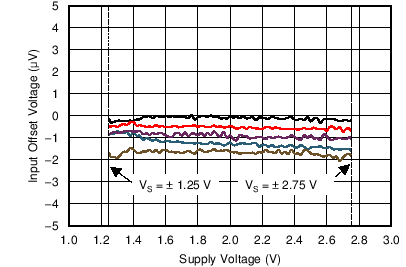

| 3 typical units |

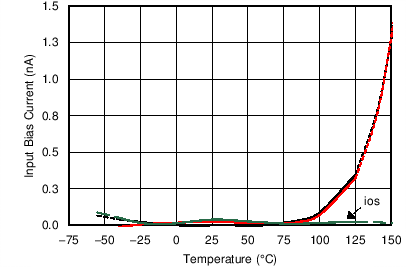





| G = +1, f = 1 kHz, VO = 4.5 VPP, RL = 2 kΩ, BW = 90 kHz |





| G = –1 |

| Rising output |

| 0.01% settling = ±200 µV |



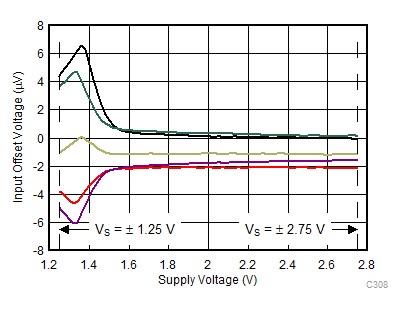




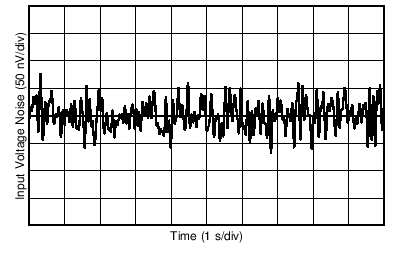


| G = +1, f = 1 kHz, VO = 4.5 VPP, RL = 10 kΩ, BW = 90 kHz |




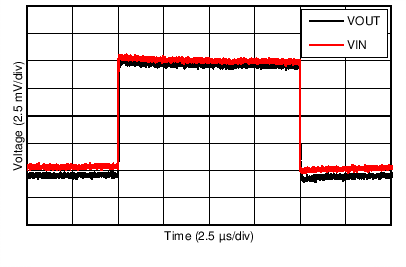
| G = +1 |

| Falling output |

| 0.01% settling = ±100 µV |


| PRF = –10 dBm |